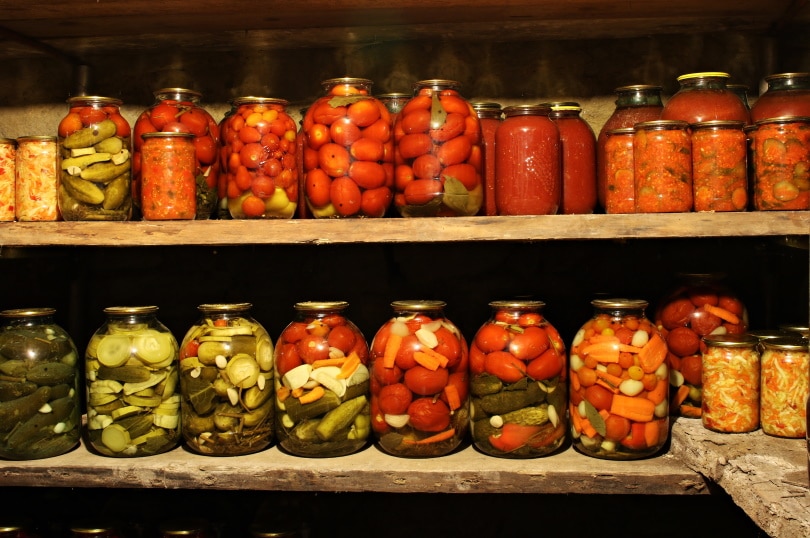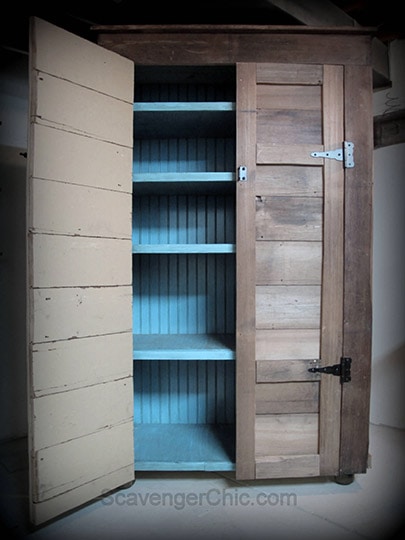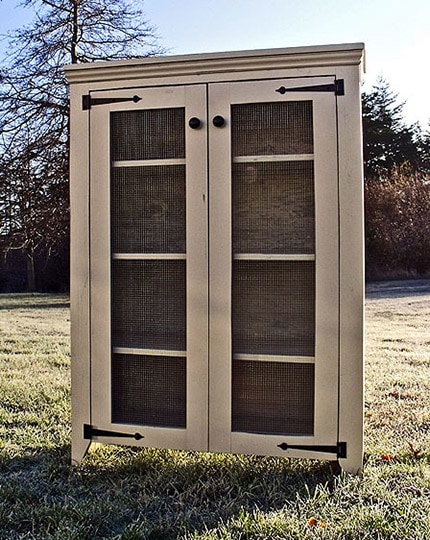5 DIY Jelly Cabinet Plans that You Can Build Today (with Pictures)
-

- Last updated:


Have you ever been to an older country-style home? They have a certain rustic charm like no other. From their design and construction to furniture, these homes will give you a cozy warm-and-fuzzy feeling every time.
One particularly comfy element of a rustic home is a jelly cabinet.
Also known as jelly cupboards, these cabinets were thought to have originated from America’s Midwest in the 1830s. At this time, jams and jellies had become an American staple thanks to readily available fruits that were produced in that region.
Unable to consume all of the harvested fruit fresh, most of the crop ended up being turned into some form of preservative. And once bottled, these jams and jellies would be stored in the aptly named jelly cabinet. With one of these genius plans, you can learn how to build a jelly cabinet of your very own.
What is a Jelly Cabinet?
A jelly cabinet typically consists of a large cupboard with two hinged doors and is primarily kept in the kitchen or dining area of the home. However, jelly cupboards can differ wildly with the addition of multiple drawers and shelves. The most common design you’ll come across is a dual door model with two additional drawers above.
The shelving within each jelly cupboard was generally short, however. They normally were just tall enough to accommodate the size of the jelly jars used. This made the shelving more permanent and allowed for more total shelving—to ultimately provide space for more preservatives.

You can construct a jelly cabinet out of almost any wood you’d prefer; however, there was a general standard when it came to construction materials. In the book Country Furniture by Ellen Plante, jelly cupboards made for use in dining rooms—or other more public rooms—were often constructed out of finer materials such as cherrywood, chestnut, oak, or walnut. Jelly cabinets found in the kitchen were mainly crafted out of inexpensive pinewood. This is because kitchens weren’t public thoroughfare and showcased as they are today.
Growing Popularity of Jelly Cabinets
Although jelly cabinets were found in many Midwestern homes, it wasn’t until the 1920s that they became popular throughout the US. Their introduction into Montgomery Ward’s mail-order catalog began spreading the reach of the jelly cabinet. Montgomery Ward’s model was a simple two-door cabinet with a single drawer overarching the two.
But you don’t need to go back and time to find a quality jelly cabinet. In fact, you can make one on your own at home! Below, you’ll find our favorite free DIY jelly cabinet plans.
The 5 Best DIY Jelly Cabinets
1. Rogue Engineer’s Jelly Cabinet

If you’re looking for a truly rustic jelly cabinet, these are the plans for you. It’s a very simple design consisting of two hinged doors with mesh screening. The cabinet is 4 inches tall but just under 3 inches wide. We like this design for a kitchen jelly cabinet due to its simplistic design and see-through cabinet doors.
2. ScavengerChic’s Rustic Cupboard

For those of you with extra space, we’d recommend building this behemoth of a jelly cabinet. It stands 6½ feet tall and has 2 massive, hinged doors. The actual shelving on this cabinet has a much higher ceiling allowing for you to store taller jars and other pantry goods that might not fit in a traditional jelly cabinet. This cupboard will also make for a wonderful discussion piece to your country kitchen or rustic dining room.
3. DIY Jelly Cabinet from This Old House

Vintage, quaint, and simple. If these words describe your home décor, you should seriously consider building this jelly cabinet. It’s a very homey and simple design; however, its curved door adds a very simple touch of class. This cabinet would look absolutely wonderful in a kitchen with a vintage or wood-burning stove.
4. DIY Vintage Jelly Cabinet

A jelly cabinet doesn’t need to be very ornate to serve its purpose. In fact, the original jelly cabinet was just a place for basic storage. Nowadays, that practical use often comes with an antique look that will add a touch of history to your home. This particular model is also very useful around the home—not just in the kitchen or dining areas. If properly treated, this cabinet would make a great addition to any bathroom for extra storage.
5. DIY Patrick’s Jelly Cabinet

If you’re familiar with DIY plans, we’re pretty sure you’ve heard of Ana White. She’s got some of the best DIY plans and projects around—and that includes jelly cabinets. We’re very fond of this particular cabinet due to the stylistic choices and accents that add a touch of class to a simple, utilitarian cupboard. Even though this cabinet has mesh screen doors, we’d have no problem showing this cabinet off in a dining area.
Building Your Own Jelly Cabinet
You don’t need to go antiquing to own a piece of American history. Instead, you can create your own. And there’s no better way to do that than learning how to build a jelly cabinet. It’s a super fun project that you can accomplish over a weekend and use for a lifetime.
Remember, these are just some base designs. If you’re looking for something more ornate or with different dimensions, you can simply adjust these basic plans to fit your ideas. That’s the joy of jelly cupboards. They are completely customizable. But if you’re looking for a solid starter template, these are the plans we recommend.
Featured Image Credit: mavo, Shutterstock
Contents


